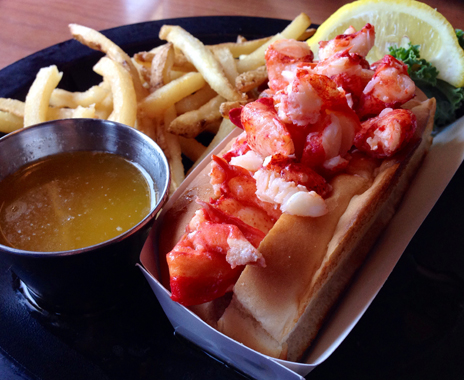Regular readers of this column know that for some years now, I’ve been dispensing suggestions on how quick-serve chains can do more to court millions of Millennials, aka members of Generation Y, whose adventurous palates, curious minds, and unconventional tastes have often made them elusive quarry for marketers—particularly those at large, multinational corporations—in many industries.
My hope is that these occasional dispatches have helped demystify some of the characteristics that make Millennials so often… well, mystifying for we who preceded them as featured performers on the American consumer main stage.
Interestingly, something funny happened as Generation Y consumers made their presence and buying power felt. Are you ready for this? They grew up. If the Millennial generation can be said to trace its origins to around 1980—and there’s some deliberation as to whether such a hard and fast dividing line can be accurately drawn—then the eldest of their numbers would be 35 today. That’s plenty old enough for Millennials to have kids of their own.
Enter Generation Z—those born around the middle of the 1990s. In a March New York Times essay, writer and workplace consultant Alexandra Levit said of this burgeoning demographic: “They are poised to be somewhat different from the Millennials. … They are growing up in a healthier economy and appear eager to be cut loose. They don’t wait for their parents to teach them things or tell them how to make decisions. … Gen Z is already out in the world, curious and driven.”
But don’t take cover; take heart. Of Gen Z’s food preferences, The NPD Group reported last December that they are consuming more in the way of fresh foods—fruits, vegetables, meat, poultry, fish, and eggs, for example. “The youngest generations [are] driving the growth of better-for-you snacking,” the group wrote upon the release of its “Future of Eating” report. “These consumers are looking for values like fresh or nutrition when it’s time to ‘grab something in a pinch’ instead of just grabbing anything for speed.”
So what role might seafood play in a menu designed to appeal to this selective emerging Z demographic? Certainly, fish and shellfish have the health halo and high protein content to which Millennials and Gen Z are partial. The high rate of so-called “flexitarianism” among Z-ers also suggests they may be more intrigued than past generations, not just in fish flesh in general, but also in rarer and more unusual specimens, from cobia and barramundi to branzino, Arctic char, sablefish, black cod, wahoo, and wolffish.
While we’re talking about variety and flexitarian-friendly choices, it may also be worth noting that sea vegetables are an emerging trend that could well find favor among Gen Z. Seaweeds and sea asparagus, for instance, are becoming better-known and more widely accepted. Just a few weeks ago, on vacation in Ireland, I came across a salmon smokehouse in a remote area whose gift shop was selling pastas made with seaweed and other sea vegetables. It seems certain to me that these formerly obscure foodstuffs will continue to gain notice and some degree of popularity over time.
Much seafood also benefits from being flexible enough to prepare using a host of different ethnic ingredients and spices. Naturally, our young American Z’s—being comfortable and conversant with a range of different cultures, races, and ethnicities—appreciate the vast variety of ethnic cuisines available to them, and this offers quick-serve chains numerous options when considering how to incorporate more seafood into their menus. The humble lobster roll, for instance, is something of a blank canvas at Da Lobsta in Chicago, where versions of the New England classic featuring Asian (soy mayonnaise, slaw, Szechuan sauce), Mexican (salsa, Chihuahua cheese, avocado), Greek (Feta, tzatziki, cucumber), and Indian (cilantro mayo, mango chutney, potato paneer) flavor profiles sit alongside the more traditional, less-exotic variety.
Finally, as we consider ways for quick-service and fast-casual chains to better court the Z Generation, it’s worth thinking about why fast-casual chains have encountered such tremendous success over the past decade. While quality, variety, and presentation no doubt play a role, these chains’ emphasis on sustainability is also, by many counts, a significant factor. And when it comes to seafood, sustainability is critical.
Organizations such as the International Seafood Sustainability Foundation and the Monterey Bay Aquarium’s Seafood Watch are helping to defend the fruits of our oceans, aided by conscientious restaurateurs who understand that they, and their customers, have a role to play in preserving the many species of fish and shellfish whose numbers are dwindling. For chains that elect to expand their seafood offerings, sustainability should be both a key consideration and a part of their marketing appeal.
Rubio’s, the San Diego–based fish taco chain, has earned praise for its aggressive promotion of sustainable seafood, and Long John Silver’s, too, boasts of fishing partners “who consistently score the highest in the industry for sustainable fishing practices.” That conscientious approach can go a long way with an emerging group of consumers whose purchasing power is intimately tied to their perceptions of freshness, culinary adventure, and responsible stewardship of the environment and Earth’s natural resources.
So welcome, Gen Z. We’d be happy to take your order now.






